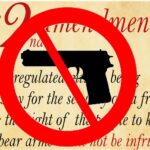Freedoms Forfeited

Each Summer we try to plan a family vacation around the 4th of July. The original plan for 2021 was to go out West to see The Grand Canyon and Arches National Park among other things, but a busy summer schedule had our family looking for other options. That is when our 16-Year-Old history buff suggested going to Washington D.C. My wonderful wife got to planning immediately and lined up a schedule to visit Monticello (Thomas Jefferson’s House), Alexandria, VA, The National Mall in DC, Mt. Vernon (George Washington’s House) Philadelphia and Gettysburg Pennsylvania. On July 1st we set off on trip through history.
Monticello
Our first stop was at Monticello where we toured Thomas Jefferson’s home. As we prepared to go up to the home, I checked the regulations on the website and they prohibited “weapons” so I was forced to leave my firearm and knife in the car (Freedom Forfeited). Before heading to the home we had to pass through what appeared to be a poorly functioning metal detector. We then boarded a small shuttle bus that took us up to the home. Before entering the home, a tour guide gave us a short summary of Jefferson’s life, including a history of the slaves that kept Monticello functioning. While I knew that Jefferson owned slaves, it was still perplexing that the man who coined the phrase “all men are created equal” owned more than 600 slaves. However, according to the guide and the Monticello Foundation (monticello.org) website, Thomas Jefferson, years after his wife’s death, fathered at least six children with Sally Hemings, a mixed-race enslaved woman at his home. It is documented in the article “Thomas Jefferson & Sally Hemings, A Brief History” that Sally worked for two and a half years (1787-89) in Paris as a domestic servant and maid in Jefferson’s household. While in Paris, where she was free, she negotiated with Jefferson to return to enslavement at Monticello in exchange for “extraordinary privileges” for herself and freedom for her unborn children. Decades later, Jefferson freed all of Sally Hemings’s children, but Jefferson did not grant freedom to any other enslaved family unit.” The website goes on to say that while Jefferson “called slavery a moral depravity and a hideous blot” and that even though “he made some legislative attempts against slavery and at times bemoaned its existence, Jefferson also profited directly from the institution of slavery.” I left Monticello with the impression that Jefferson and Washington, as I would learn later, both struggled with the ideas of Freedom and the culture of slavery they grew up under and of which they were apart.




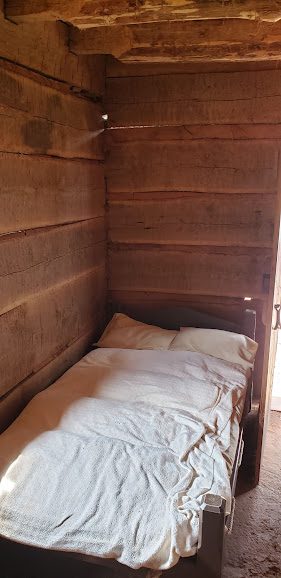
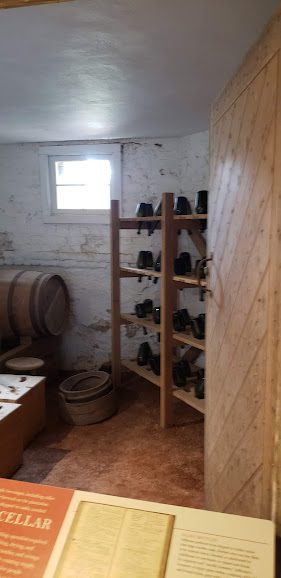
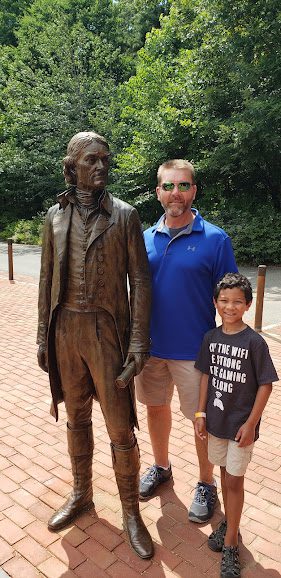
Alexandria & Washington DC
After leaving Monticello we headed to our hotel in Alexandria, VA. I specifically requested that my wife book a hotel in Virginia, because unlike DC, VA does have concealed carry reciprocity with Mississippi (Freedom Forfeited). There we met up with some family members who drove up from the Chesapeake area to join our DC adventure. We had a great dinner and made our plans to ride the Metro Train into DC the next day. Since this trip was my son’s idea, we let him set the agenda for the day. First stop was the WWII memorial on the National Mall, as well as Lincoln Memorial, Vietnam Mall and a long walk to the Teddy Roosevelt’s (his favorite President) memorial which is a small island nature preserve in the middle of the Potomac River. The final stop of the day was Arlington Cemetery to take a short tour and catch the changing of the guard at The Tomb of The Unknown Soldier. As we entered the park, we were forced to go through a metal detector, and I had to throw away my pepper spray (Freedom Forfeited). For day two, we had 4 tickets to the Museums of American History, but since there were a total of 8 of us, we decided to split up. Me, my cousin’s husband who is in the Navy, and the two oldest kids went to the museum, while my wife, cousin and the two youngest toured Old Town Alexandria. Our objective was to meet up with them later for food and fireworks on the National Mall. As you can imagine, there was a HUGE security presence, and we were forced to go through a checkpoint where they check bags and made us empty our pockets (Freedom Forfeited). This time I took off my hat and piled the contents of my pocket into the hat and presented it for inspection. Fortunately, they had no issue with my Streamlight Macrostream tactical light and didn’t see my pocket knife that was at the bottom of my ball cap and covered by my cell phone, a small win for freedom! We found a nice spot in front of the Lincoln Memorial and waited for the show to begin. The 17-minute fireworks display was simply AMAZING. I know this because my 8-year-old who is not necessarily a fan of loud fireworks said so at the end of the Grand Finale. To see the smile on his face and hear him shout “That was AMAZING” at the end of the show was worth the inconvenience associated with getting in and out of the secured area.
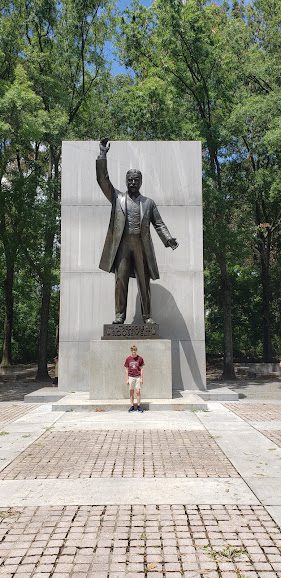
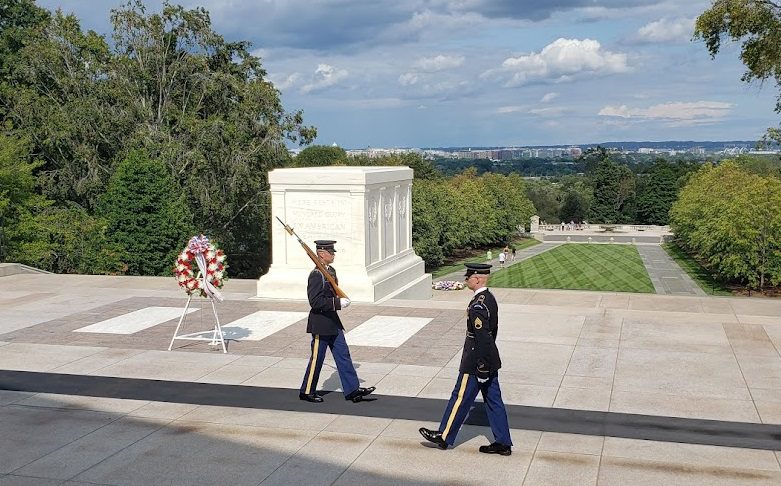




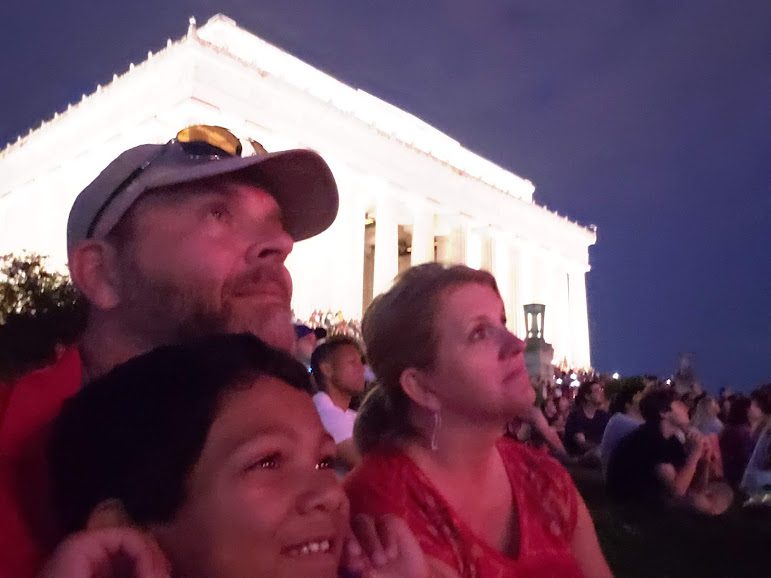
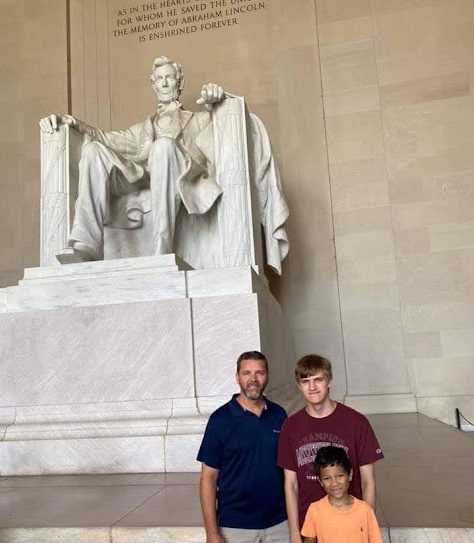
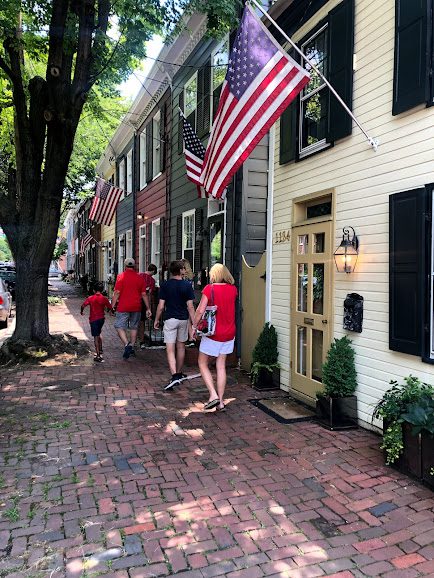
Mt. Vernon
Day 3, my cousin and her family headed back home, and we checked out of the hotel and headed 8 miles south to Mt. Vernon. Once again, I was prohibited from carrying a “weapon” into the park, and I had to leave my firearms and pocket knife in the car (Freedom Forfeited). However, security was less strict and there was not a metal detector. We spent most of the morning touring George Washington’s home and the grounds surrounding it. This included the slave quarters, George and Martha’s tomb, and the slave cemetery where they are just now starting to locate all the unmarked graves. It was a very sobering experience to take in the grandeur and history that occurred at Mt. Vernon alongside the stark contrast to the lives of those that were enslaved on the homesite. As we began to leave the grounds and head toward the museum / restaurant area, I couldn’t help but get the feeling that those 300+ slaves who lived, worked and died at Mt. Vernon had a HUGE part in helping to secure our freedom from Great Britain as well as laying the ground work for the founding of this country. I truly felt that without their Forfeited Freedom, George Washington would not have been in a position to lead the American Revolution or serve as our first President. This feeling was reinforced when we got to the museum area and we learned that “Despite having been an active slave holder for 56 years, George Washington struggled with the institution of slavery and spoke frequently of his desire to end the practice. At the end of his life, Washington made the decision to free all his slaves in his 1799 will – the only slave-holding Founding Father to do so.” We wrapped up our time at Mt. Vernon with a great lunch at the Mt. Vernon Inn Restaurant.







Philadelphia
As we left VA, we drove north to our next stop in Philadelphia. Our trip took us through two unfriendly 2A states including Maryland and Delaware (Freedom Forfeited). In fact, before leaving for our trip, I checked out the laws of each state we planned to travel to or through and I found out that Maryland has a 10-round magazine restriction. This meant that I could not bring my full-size Glock, and I opted to take my Glock 43x since it complied with the Maryland law (Freedom Forfeited). Needless to say, I felt a sense of freedom when we crossed over into a much friendlier Pennsylvania whose carry laws closely mimic Mississippi. The original reason for the stop was to visit the Liberty Bell, but we quickly realized there is a TON of history in Philly (along with some really good food). We arrived at our hotel around 4PM, dropped our bags and headed to snap a few pics of the Liberty Bell which just happens to be right across the street from Independence Hall. This historic building is where The Declaration of Independence and the Constitution were debated and signed. Adjacent to it is Congress Hall which was the first capital of the United States and where the House & Senate met from 1790 – 1800 while construction of the DC capital area was under way. We then jumped on a last-minute tour bus to take us around the city while we made plans to try and get tickets to Independence Hall for the next morning. The bus tour took us through downtown Philly and had stops for China Town, Love Park, Eastern State Penitentiary, Reading Terminal (a large indoor food market), the home of Betsy Ross, tons of museums including several devoted to native Philadelphian, Ben Franklin and The Philadelphia Museum of Art which is the site of the famous Rocky Balboa stair run.
The next morning, we got up and stood in line for about 30 minutes to get tickets to Independence Hall. You can reserve them online, but we didn’t plan that far in advance, and they only let groups of 15 in at a time. Fortunately, we were able to get tickets for the 10:45 AM tour. By now, I was becoming accustomed to the whole “no weapons” theme and just decided to leave my knife and gun in the car (Freedom Forfeited). The tour began in the Supreme Court Room before moving to the Assembly Room where all of our Founding Father assembled to discuss, debate and sign two of the most important documents in all of history. The men who signed those documents were signing up to wage war against the most powerful empire in the world and form an experimental government that had never been tried before. After our tour of Independence Hall, we toured the adjacent Congress Hall where the House and Senate met, debated and even FOUGHT over the hotly debated topics of the times. One of topics that came up frequently was the abolition of slavery. In fact, Ben Franklin, who is also one of our Founding Fathers, had been part of the abolition movement as far back as 1775, but it would take another man to help fulfill the promise “that all men are created equal.”

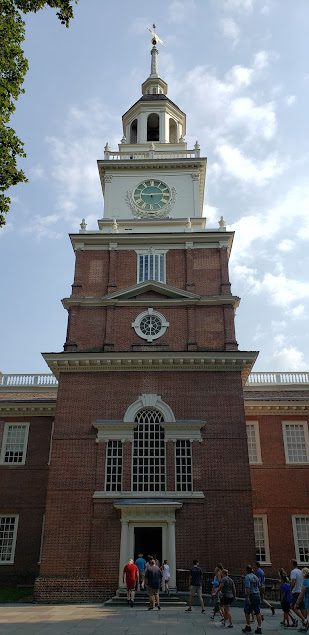


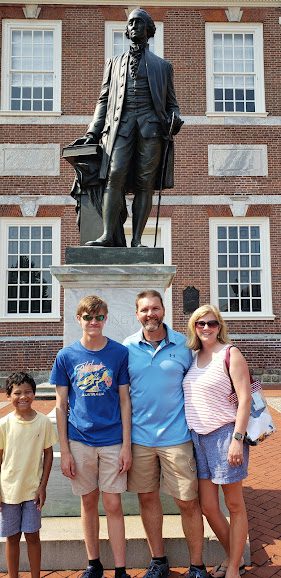


Gettysburg
After lunch in Philly, we headed southwest to Gettysburg, PA. To be honest, I wasn’t all that excited to be going to a Civil War Military Park, after all we have one in Vicksburg, MS that I have been to several times. But this was the place that our son was most excited to visit. So, we went! Gettysburg is a quaint little country town of about 8,000 residents. It felt really good to get out of the big cities and all the restrictions and back and in a more gun friendly environment. After checking into our hotel, we went to grab dinner. We wound up choosing the Dobbin House Tavern. Our son was not happy about this, because he wanted to head directly to the cemetery to see where Abraham Lincoln delivered the Gettysburg Address. He was even more depressed when he found out there was about an hour and half wait to get a table. Fortunately, unbeknownst to us at the time, the Dobbin House is directly across the street from the Cemetery! So, all four of us took a short stroll across the street to the site of Abe Lincoln’s Gettysburg address while we waited for our table. Walking around the cemetery was really not that exciting for me, but as we walked up to the Lincoln Memorial, I took a few minutes to read the Gettysburg Address scrolled out before me.
“Four score and seven years ago our fathers brought forth on this continent, a new nation, conceived in Liberty, and dedicated to the proposition that all men are created equal.
Now we are engaged in a great civil war, testing whether that nation, or any nation so conceived and so dedicated, can long endure. We are met on a great battle-field of that war. We have come to dedicate a portion of that field, as a final resting place for those who here gave their lives that that nation might live. It is altogether fitting and proper that we should do this.
But, in a larger sense, we cannot dedicate, we cannot consecrate ,we cannot hallow this ground. The brave men, living and dead, who struggled here, have consecrated it, far above our poor power to add or detract. The world will little note, nor long remember what we say here, but it can never forget what they did here. It is for us the living, rather, to be dedicated here to the unfinished work which they who fought here have thus far so nobly advanced. It is rather for us to be here dedicated to the great task remaining before us that from these honored dead we take increased devotion to that cause for which they gave the last full measure of devotion that we here highly resolve that these dead shall not have died in vain that this nation, under God, shall have a new birth of freedom and that government of the people, by the people, for the people, shall not perish from the earth.”
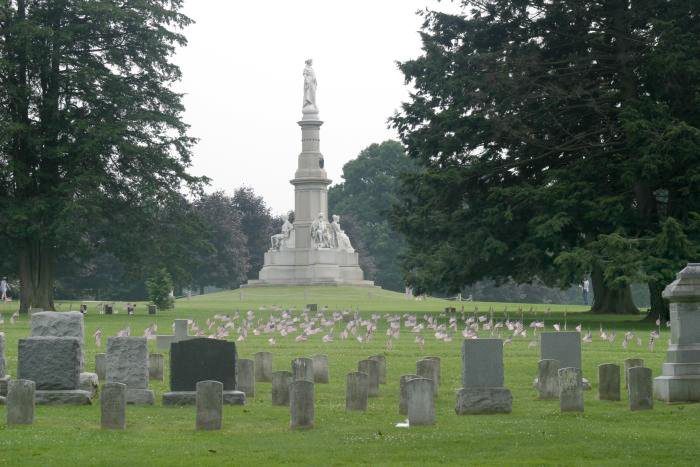
I am pretty sure I memorized this speech back in 4th grade, but until this moment, I had not fully understood what it meant or how important it was. While Lincoln was there to dedicate the cemetery site to the memory of those that died, he was also fulfilling what I believe our Forefathers wanted for this country, “a new nation, conceived in Liberty, and dedicated to the proposition that all men are created equal.” In the 12-year time span from 1776 to 1788 our Founding Fathers led a Revolution against the most powerful country on planet Earth and developed an entirely new nation with a new and experimental form of government. Then in 1863, 75 years after The Constitution was ratified, these men were “testing whether that nation, or any nation so conceived and so dedicated, can long endure” and fighting to ensure “that this nation, under God, shall have a new birth of freedom – and that government of the people, by the people, for the people, shall not perish from the earth.”
Freedom Over Everything
As I look back on this trip, I cannot help but shake my head at the irony. The irony that as I literally walked in the footsteps of our Forefathers, in their homes and in the rooms where they met to debate our future, I had to forfeit my 2nd Amendment rights and the ability to protect myself and my family. These men risked everything to gain freedom for our country, they fought and died to secure our 1st and 2nd Amendment rights. Rights that were specifically written into our Constitution, to prevent Government from creating such restrictions!
I also walked away with a different perspective on our Founding Fathers. While I believe they were extraordinary men, they were still MEN. Men who had flaws and weaknesses. Men who while simultaneously trying to create a nation “where all men are created equal” were slave owners who did not live up to that ideal. Maybe it was because they lack the political or moral courage to confront the issue of slavery at the time, or maybe it was because they were completely engrossed in defeating the British and starting a new nation from scratch. Either way, I also have a MUCH deeper appreciation for the sacrifice and the freedoms forfeited by the enslaved Men and Women. I truly believe that without them, our Founding Fathers would not have the ability to accomplish what they did. Have we completely fulfilled the vision of the Founding Fathers? I don’t believe we have and I say this not because we live in a racially charged 2021, but because I am the father of both a biological son who is white and a mixed race adopted son. I am fully aware that even in 2021, I may have to have completely different conversations with each of them as they grow up. However, I firmly believe our Founding Fathers wanted a nation where all men are considered equal, but it took men like Abraham Lincoln and Martin Luther King, Jr. (and many many others) to help further this vision.
Today we see an ever-increasing encroachment from our elected officials on our rights, especially our 1st and 2nd Amendment rights. These encroachments are not new, politicians have been using these tactics for hundreds of years in an attempt to keep or gain power and intentionally divide us among racial lines (read The very racist history of gun control. Now is not the time to allow politicians to divide us! Now is the time to remind those politicians that in the United States of America the power resides with THE PEOPLE! And that a “government of the people, by the people, and for the people, shall not perish from the earth.” That we are endowed by our creator with unalienable rights. These rights include Life, Liberty and the Pursuit of Happiness, The Freedom of Speech and the Right to Keep and Bear Arms!

